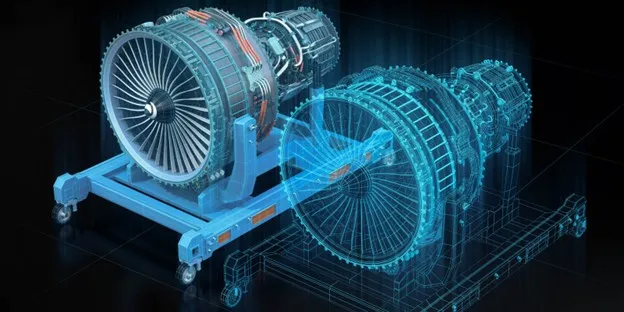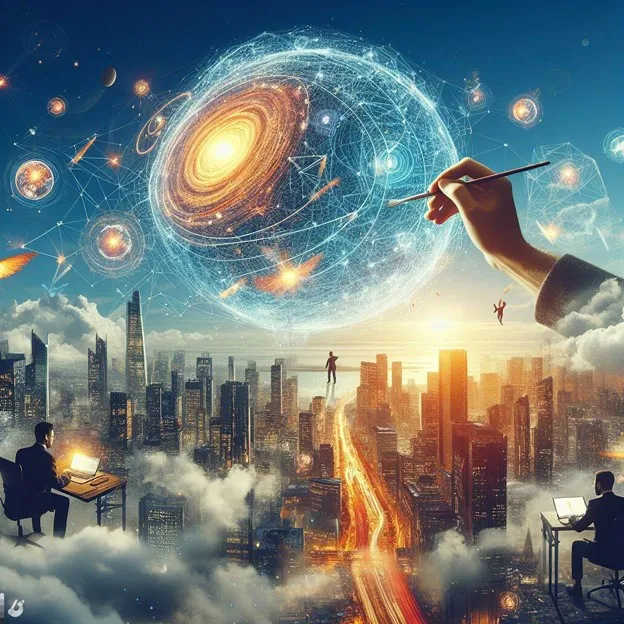Digital twins are the result of replicas between physical reality and digital innovation, they consist of a technological innovation that promises to completely transform the way we interact with the environment. These virtual representations allow you to analyze real processes, experiment with existing physical objects, and build hypothetical scenarios to predict behavior. It is possible to create a virtual twin of virtually any entity, from an airplane engine to a wind farm or even an entire city.
Advanced computer models, previously limited to industries, are poised to expand their influence to areas as vast as the global economy, the oceans, and even planet Earth. What are these digital twins really and how will they redefine the relationship with the physical and digital world?
This article will discuss the impact and unlimited potential that digital twins offer to change the future.
What are digital twins?
A future is envisioned where computational models will be able to accurately simulate the behavior of physical elements through the constant collection and processing of data from sensors. These future digital twins will operate as a faithful reflection of reality, allowing changes and improvements to be tested before implementing them in the physical world.
For example, a gas turbine has as its feed input a stream of 97% pure methane and air at 20 °C, and drives an alternator that produces electrical energy. A properly programmed digital twin of this turbine can predict the gigawatts of power the alternator will produce if the methane purity drops to 96% or the air temperature rises to 21°C.
When it is said that “by receiving the same inputs, it provides the same outputs” it does not mean that, in the digital twin of the turbine, physical air enters, but that the data of that air enters (quantity, temperature, etc.) . The same goes for exits.

Although their development has been taking place for years, their rapid evolution currently positions them to extend to almost any economic activity. The next iterations of digital twins integrate the trends of the digital 4.0 era: advanced sensors, IoT (Internet of Things) and IIoT (Industrial Internet of Things), 5G protocol for the management of large volumes of information, advanced analysis, cloud computing and extended reality technologies.
The evolution of digital twins
Initially, digital twins were static computer models that replicated the basic structure and functions of a physical object or process. However, its evolution has been exponential. Today, these twins not only replicate the appearance and functionality, but integrate real-time data from sensors, allowing for dynamic modeling and a much deeper understanding of the behavior of the physical elements they represent.
The key to its evolution lies in the convergence of multiple technologies. The incorporation of advanced sensors, the Internet of Things (IoT) , 5G connectivity, sophisticated artificial intelligence (AI) and cloud computing has taken digital twins to a new level of sophistication. This allows them not only to reflect reality, but also to predict and optimize their operation, thus facilitating informed and strategic decision-making.
This advance has led to a wide range of applications in various sectors. From manufacturing and logistics to energy management and medicine. Its ability to test and simulate changes in a virtual environment before implementing them in the physical world has reduced costs, minimized risks and accelerated innovation in unprecedented ways, revolutionizing the way companies operate and make decisions.
In the future, digital twins of, for example, a wind farm will integrate real-time data from each turbine, such as wind speed, power generation efficiency and local weather conditions. Thanks to this information, these digital twins will simulate various scenarios, allowing operators to predict and optimize wind energy production. Preventive maintenance strategies can be tested, possible failures can be identified before they occur and the position of the blades can be optimized to maximize wind capture.
This approach reduces downtime, optimizes operational efficiency and increases energy production. Using this technology in wind farm management, companies can make more informed and strategic decisions, resulting in high performance and reduced costs throughout the life cycle of the energy infrastructure.
Impact and future projection
Predictions for the digital twin market are extraordinary: 58% annual growth is expected until 2026. Furthermore, estimates from Accenture plc (Securities Analysts’ Estimates, ACN) suggest that by 2030, this sector could contribute significantly to emissions reductions and generate substantial economic benefits in various sectors.
Industries such as automotive and energy have already adopted these twins, with an impressive 85% of electric vehicles and 75% of new wind installations developed with their technological integration.

The future of digital twins
The potential of this innovation is seen in projects that will replicate entire ecosystems, from ocean management to partial, and even total, digital recreation of planet Earth. In addition, a new technological era is projected where digital twins, assisted by 6G, could create virtual copies on a planetary scale.
This technology should not be confused with its industrial counterparts, since they offer different levels of detail, such as the metaverse, which is postulated as a new internet with access to public and private digital twins.
The long-term projection envisions future iterations of digital twins, such as reproductions of individuals in avatars and holograms evolved through technologies such as deep fakes. In this futuristic scenario, the Digital Twins would be endowed with artificial intelligence at a higher level and have unparalleled access to distilled wisdom.
Conclusions
Digital twins present significant and diversified potential ranging from improvements in environmental management to innovations in healthcare. This technological approach not only represents an evolution in terms of digitalization, but also configures a fundamental change in man’s relationship with the physical world.
The potential impact of digital twins at the intersection of the physical and digital world is undeniable. Its ability to transform environmental management, revolutionize medical care, will fundamentally change and modify the relationship with the environment and the digital world.
Discover the future today! Immerse yourself in the world of digital twins and transform your vision of tomorrow.”

